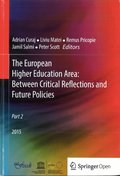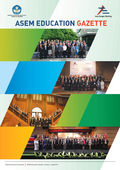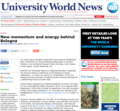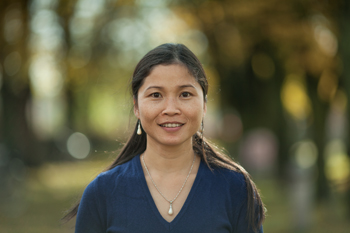ASEM: Regionalisation and Higher Education ‘Policy Travel’ between Europe and Asia
The Genesis of ASEM
The Asia-Europe Meeting (ASEM) was constituted in 1996 as an informal inter-regional forum for developing dialogue and cooperation, and fostering understanding between the European Union (EU) and the Association of South East Asian Nations (ASEAN). Through high-level summits ASEM addresses issues concerning three main pillars: political, economic and socio-cultural. Since then ASEM has expanded to 51 partners and it has also developed from summit meetings into processes, such as the ASEM education process involving different actors ranging from ministers, senior officials and technical experts to university rectors, academics and students, encompassing a wide range of topics and initiatives. Highlight of this process is the exchange of ideas for higher education (HE) reforms at regional level.
The EU’s Interest
The European Union is interested in Asia as a strategic region within which to realise its Lisbon competitiveness agenda by winning ‘minds and markets’, namely recruiting talented students, developing joint curriculum, funding joint research, as well as synchronising Asian higher education systems with the Bologna Process. Emphasising that ASEM is a forum for dialogue and open exchange, the EU presents the Bologna Process, not as a ready-made model for transfer to Asia, but as a work-in-progress in Europe whose relevance to Asia is up for discussion; ideas are floated, good practices are shared, and all voluntarily engage in shaping the outcomes.
The ASEAN’s Interest
Many Asian countries have been monitoring the Bologna Process closely and become partners in the Bologna Policy Forums. But there is little known about Asia’s agendas. It appears that Asia looks for a way to increase convergence and build regional identity while retaining the distinctiveness of each country’s HE sector. As it evolves, the newly adopted linguistic jargon of Asian higher education may strongly resemble the Bologna Process but also mask quite substantial differences.
Asian ASEM countries – such as Japan, China, Thailand, Vietnam, Malaysia– are enthusiastically offering ministers, senior civil servants and university rectors to participate in ASEM working groups on the Bologna agenda, but each is interested in particular aspects, they diverge in their views, and it is not clear what ideas they take home and how they re-contextualise these ideas on HE reform in their national settings.
This Study
The three schools of thought about how educational policies travel underpinning this study are Educational Policy Borrowing approach (Cowen, Phillips, and Steiner-Khamsi), the Common World Educational Culture approach (Meyer and his colleagues at Stanford University), and the Critical Grammar of Education Policy Transfer approach (Dale and Robertson), which provide different perspectives for analysing the ASEM education process.
This study will add to the current theoretical debates on policy travel by identifying key European and Asian actors, exploring ethnographically how ASEM meetings serve as forum for discussing and extending the Bologna Process trans-regionally, examining the relationship between the exchange of cultural ideas and economic interests, and the interrelationship between states’ engagement in ASEM education agendas and their negotiations in regional and national contexts.
News from Que Anh Dang
Que Anh Dang has a chapter in newly released book
UNIKE PhD Fellow Que Anh Dang has written a chapter in the newly published book 'The European Higher Education Area: Between Critical Reflections and Future Policies'.
New article written by Que Anh Dang has been published
UNIKE PhD Fellow Que Anh Dang has written an article, which has just been published on the GlobalHigherEd blog site.
Que Anh Dang has edited Volume 1 of the ASEM Education Gazette
UNIKE PhD Fellow Que Anh Dang has edited (and authored much of) Volume 1 of the ASEM Education Gazette.




